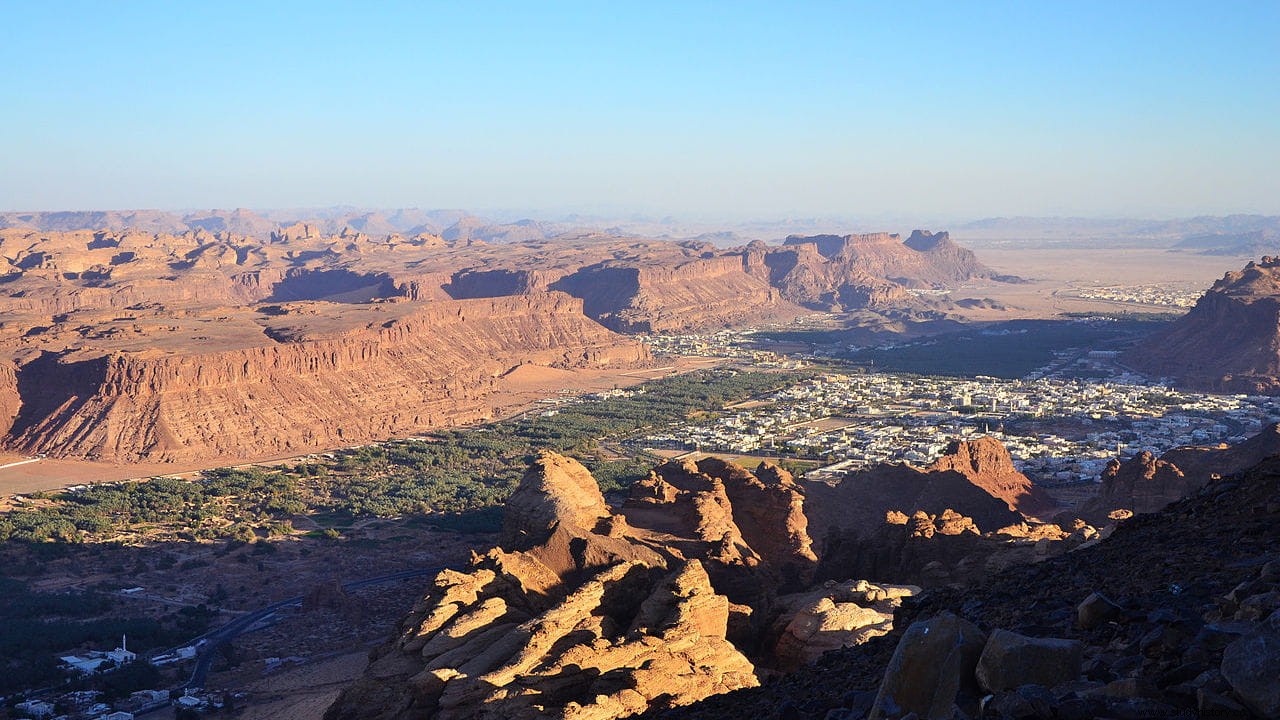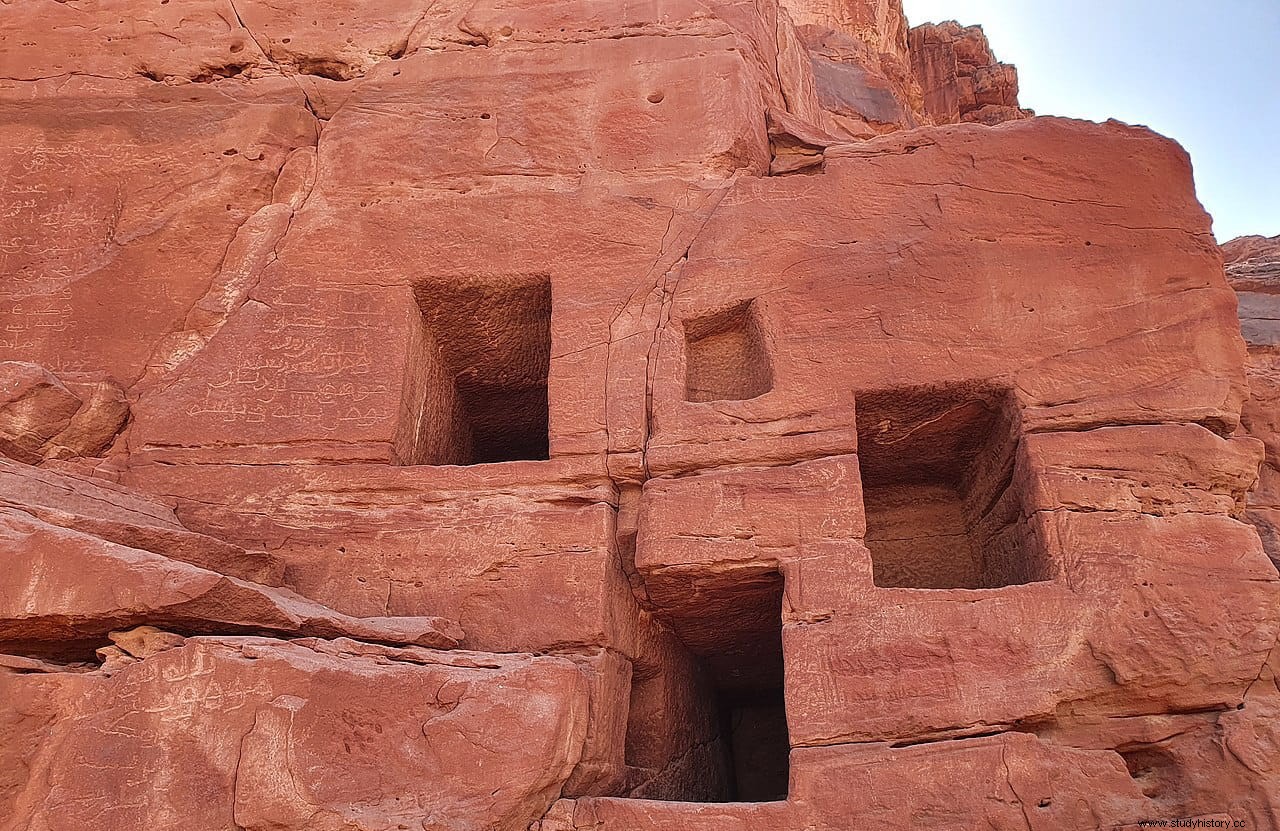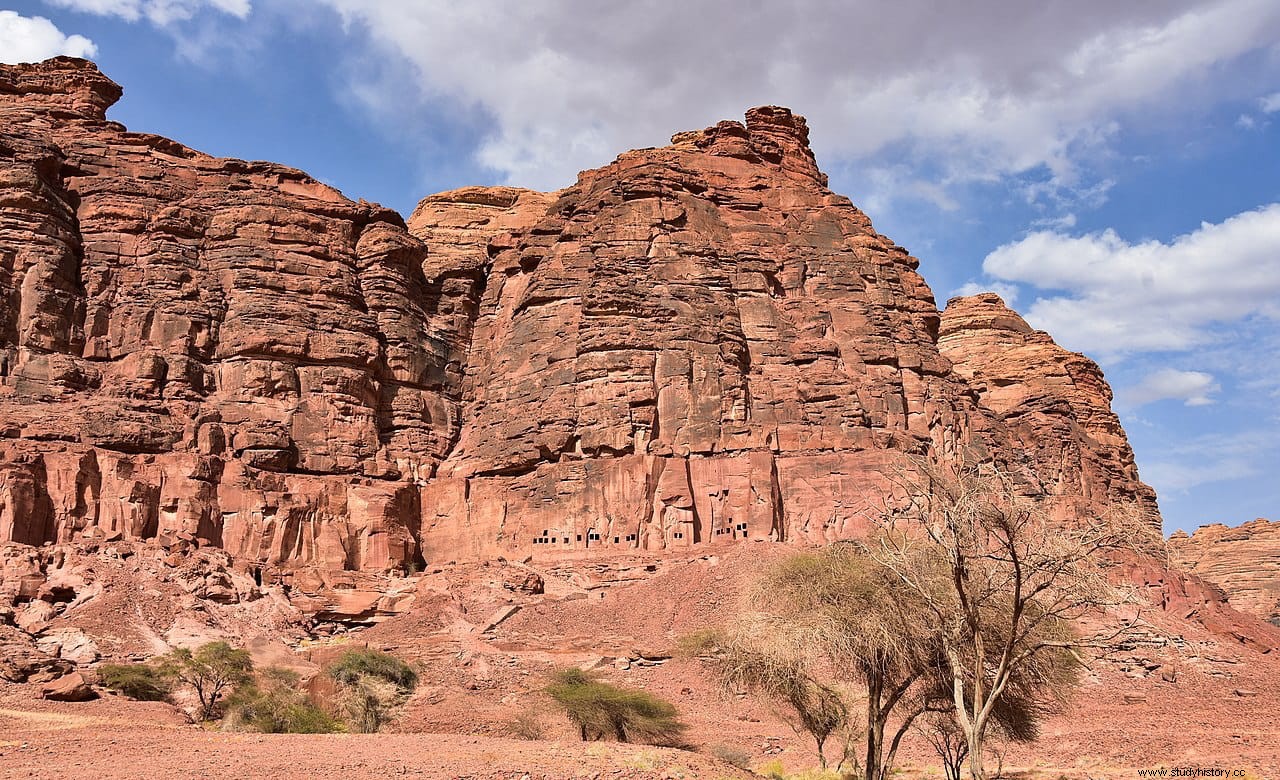Every history and archeology buff knows who the Nabataeans were, the builders of the spectacular Petra in present-day Jordan, whose kingdom was conquered by the Romans in 106 AD.
A little further south, already in the Arabian Peninsula, there was another powerful and older kingdom that, curiously, succumbed at the hands of the Nabataeans around 24 BC. It was called Kingdom of Dedan.
But before that, it played an important cultural and economic role, ruling a vast territory around the Gulf of Aqaba. The kingdom, which was also called Lihyan, had its capital in the city of Dedan, about 4 kilometers north of the current oasis of Al-Ula, and about 110 kilometers southwest of Teima.

It was one of the most important caravan centers in northern Arabia, located on the Incense Route, and is mentioned in biblical texts and in the Chronicle of Nabonidus, the last Babylonian king (550-549 BC), which is preserved on a tablet with cuneiform script in the British Museum.
Dedan developed its own culture, including its own language and alphabet, resulting in a mix of Arab traditions with influences from surrounding empires.

The origins of the kingdom are believed to be in the late 7th or early 6th century BC, the date to which the impressive rock-cut tombs, known today as the Lions of Dedan Tombs, date. .
There are more than 20 niches located in the eastern rock face of the Jebel Dedan mountains in Al-Ula, some of which are decorated with large reliefs of guardian lions.
These are square-shaped niches cut at different heights in the mountainside, whose cavities are about two meters deep, and which have been dated between 600 and 500 BC. It is unknown who was buried there, although researchers believe they may have been local governors or other influential people.

To reach the tombs, which are located approximately one kilometer from the main archaeological site, it is necessary to climb a stairway about 50 meters high in the cliff, above the valley where the ancient oasis is located.
The only two tombs that are flanked by lions would mark the resting place of kings, princes or other important personages, and show a Mesopotamian influence in their decoration (mainly the Babylonian lion motif).

Some tombs have an inner chamber-like room, and within them are niches carved into the walls or the floor. On the lower slope are mainly individual tombs. In some there are inscriptions that indicate the name of its occupants.
An inscription on one of the tombs indicates that it belonged to a member of the Minaic community of Dedan, originally from Ma'in in present-day Yemen. The Mineans were merchants and the most important trading partners of the kingdom of Dedan, of which a small colony lived in the oasis.
The Dedanites regained their freedom and independence in AD 106, when Rome conquered the Nabataean kingdom, reestablishing the old frontier.
The Roman legionnaires escorting the caravans stopped at that point, just 10 kilometers before the city of Dedan, and never crossed it.

However, sometime in the 2nd century AD. the kingdom disappeared, probably absorbed by more powerful ones on the Arabian peninsula, and the memory of the builders of the lion tombs was lost forever.
